In an era where consumer attention is fragmented and advertising costs soar, content marketing has emerged as the great equalizer for entrepreneurs. Small businesses and startups, often constrained by limited budgets, can leverage content to buildIn an era where consumer attention is fragmented and advertising costs soar, content marketing on a shoestring budget has emerged as the great equalizer for entrepreneurs. Small businesses and startups, often constrained by limited resources, can leverage this strategy to build authority, foster trust, and drive organic growth. Unlike traditional advertising, which demands significant financial investment for fleeting visibility, content marketing on a shoestring budget thrives on creativity, consistency, and strategic storytelling.
This guide offers a comprehensive roadmap for entrepreneurs seeking to maximize impact with minimal resources through content marketing on a shoestring budget. We’ll explore foundational principles, actionable tactics, and advanced strategies, supported by real-world case studies and practical tools. By focusing on high-value, low-cost methods, you’ll learn how to transform content into a sustainable engine for brand growth—proving that innovation, not budget size, fuels success. authority, foster trust, and drive growth organically. Unlike traditional advertising, which demands significant financial investment for fleeting visibility, content marketing thrives on creativity, consistency, and strategic storytelling.
Understanding Content Marketing
At its core, content marketing is about delivering value to your audience through thoughtfully crafted content. Whether through blog posts, videos, podcasts, or social media updates, the goal is to educate, entertain, or inspire—not to overtly sell. This approach fosters trust, positioning your brand as a helpful resource rather than a transactional entity.
Traditional advertising often interrupts consumers with messages they didn’t seek out, leading to ad fatigue. In contrast, content marketing meets audiences where they are, addressing their needs and interests proactively. For example, a local bakery might share a video tutorial on baking sourdough bread, subtly showcasing their expertise while providing genuine value. Over time, such content builds a loyal audience that associates the brand with quality and reliability.
The longevity of content marketing further enhances its appeal. A well-optimized blog post or YouTube tutorial can attract traffic for years, compounding in value long after its creation. This evergreen quality makes it an ideal strategy for businesses looking to stretch their marketing dollars.
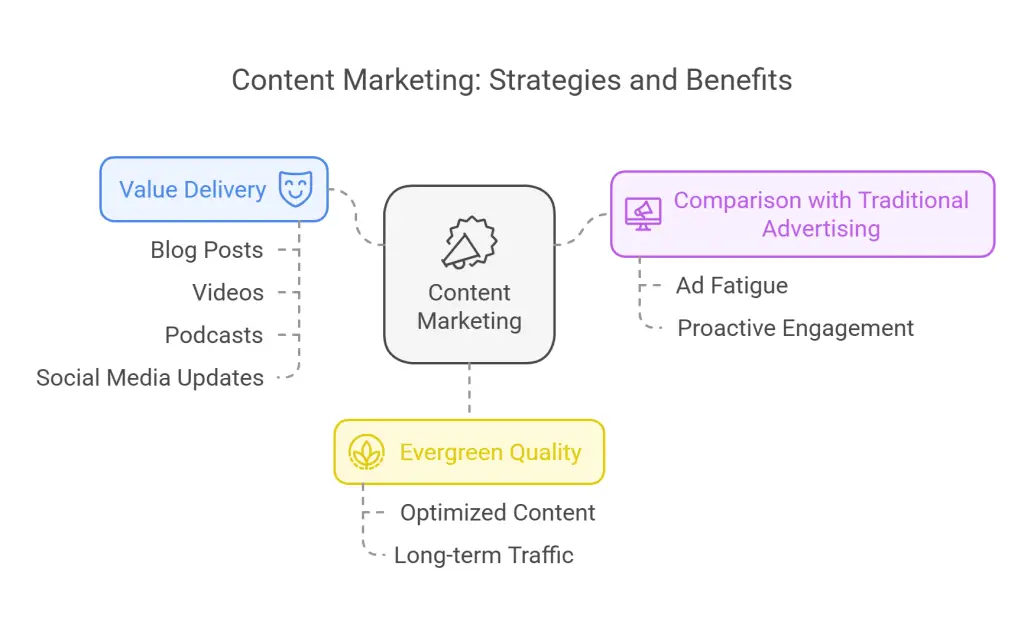
Why Content Marketing Matters for Entrepreneurs
For small businesses, content marketing isn’t just a tactic—it’s a necessity. Here’s why:
1. Building Brand Awareness
In crowded markets, differentiation is critical. Content marketing allows businesses to carve out a unique identity by sharing stories, insights, and expertise. A freelance graphic designer, for instance, might publish case studies detailing how they solved a client’s branding challenge. Over time, these narratives build recognition and credibility, helping the designer stand out in a sea of competitors.
Visual branding also plays a key role. Consistent use of colors, fonts, and tone across all content reinforces brand identity. A sustainable fashion brand might use earthy tones and minimalist designs in its Instagram posts to align with its eco-friendly ethos, creating a cohesive and memorable visual identity.
2. Driving Customer Engagement
Engagement goes beyond likes and shares—it’s about fostering meaningful connections. Interactive content, such as polls, quizzes, or Q&A sessions, invites audiences to participate actively. A pet supplies store could host a monthly “Pet Photo Contest” on Facebook, encouraging customers to submit pictures of their pets. By featuring winners on their website and social channels, the store not only engages existing customers but also attracts new ones through shared content.
Responsive communication further deepens relationships. Prompt replies to comments, direct messages, and reviews signal that a brand values its audience. A local coffee shop that responds thoughtfully to feedback on Google Reviews, for example, demonstrates commitment to customer satisfaction, fostering loyalty and word-of-mouth referrals.
3. Boosting SEO and Organic Reach
Search engine optimization (SEO) is a cornerstone of content marketing. By targeting relevant keywords, businesses can improve their visibility on search engines like Google. A home repair company might create blog posts around long-tail keywords like “how to fix a leaky faucet” or “winter home maintenance checklist,” attracting homeowners searching for DIY solutions.
Backlinks from reputable websites further enhance SEO. Guest blogging on industry platforms or collaborating with influencers can generate these valuable links. For instance, a digital marketing agency writing a guest post for a popular business blog not only gains exposure but also earns a backlink that boosts their site’s authority.
4. Nurturing Leads Through the Buyer’s Journey
Content marketing guides potential customers from initial awareness to final purchase. At the top of the funnel (TOFU), educational content like blog posts or infographics addresses broad pain points. A financial advisor might publish “5 Common Retirement Planning Mistakes” to attract readers early in their research phase.
Middle-of-the-funnel (MOFU) content, such as webinars or case studies, helps prospects evaluate solutions. A SaaS company could offer a free webinar on “Automating Email Marketing,” demonstrating their product’s value while capturing leads. Finally, bottom-of-the-funnel (BOFU) content, like free trials or discount offers, nudges prospects toward conversion.
5. Cost-Effectiveness and Scalability
Content marketing requires minimal upfront investment compared to paid advertising. Free tools like Canva for design, Anchor for podcasting, and Mailchimp for email campaigns empower businesses to create professional-quality content without breaking the bank. Additionally, repurposing content across formats—turning a blog post into a video or social media carousel—maximizes reach with minimal effort.
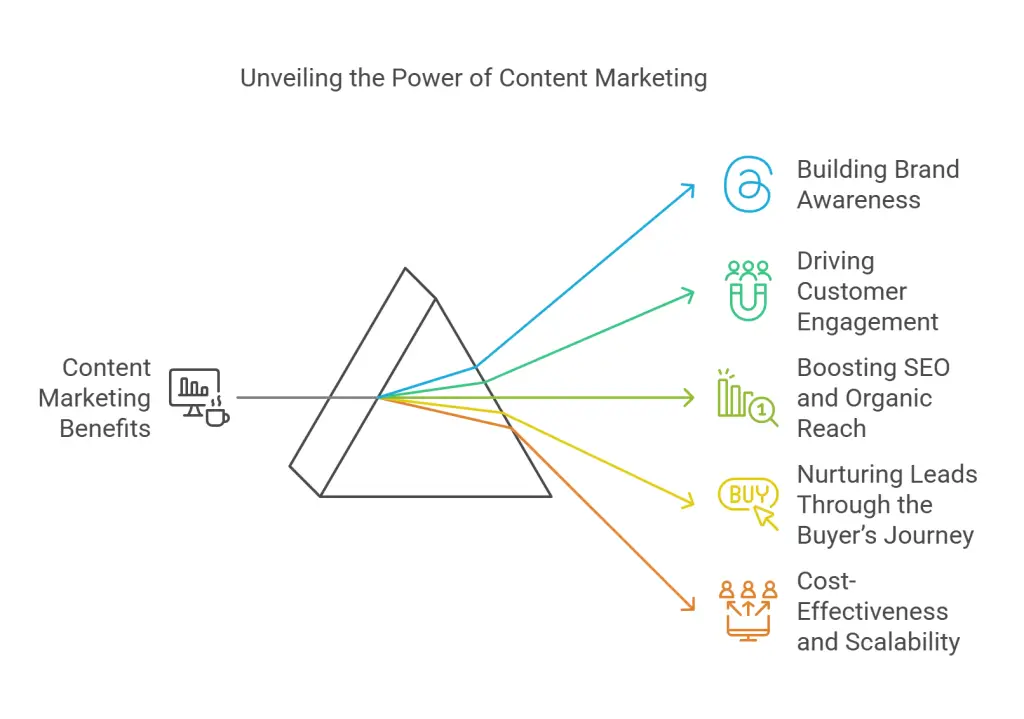
Developing a Strategy for Content Marketing on a Shoestring Budget
A well-defined strategy ensures your efforts align with business goals. Here’s how to build one without overspending:
Step 1: Define Clear Objectives
Start by identifying what you want to achieve. Common goals include increasing website traffic, generating leads, or improving customer retention. For example, a boutique fitness studio might aim to grow its email list by 20% in three months by offering a free “At-Home Workout Guide” in exchange for subscriptions.
SMART goals (Specific, Measurable, Achievable, Relevant, Time-bound) provide structure. Instead of a vague goal like “get more clients,” a SMART goal would be: “Generate 50 qualified leads in 60 days through a LinkedIn campaign targeting small business owners.”
Step 2: Understand Your Audience
Effective content resonates with its intended audience. Develop buyer personas to capture your ideal customers’ demographics, challenges, and preferences. A B2B software company, for instance, might target “Tech-Savvy Tim,” a 35-year-old IT manager seeking tools to streamline team workflows.
Use surveys, social listening, and analytics to refine these personas. Tools like SparkToro can reveal where your audience spends time online, what influencers they follow, and which content formats they prefer.
Step 3: Choose High-Impact Channels
Focus on platforms where your audience is most active. A lifestyle brand targeting Gen Z might prioritize Instagram Reels and TikTok, while a B2B consultancy would lean into LinkedIn articles and webinars.
For example, a local bookstore could use Instagram to showcase new arrivals, share staff book recommendations, and host live author Q&As. Meanwhile, email newsletters might highlight upcoming events and exclusive discounts for loyal customers.
Step 4: Create a Content Calendar
Consistency is key to building momentum. A content calendar helps organize topics, deadlines, and distribution channels. Include seasonal themes—like “Tax Tips” for accountants in March or “Holiday Gift Guides” for retailers in November—to stay relevant.
Free tools like Trello or Google Sheets offer customizable templates. For instance, a health coach might block out Mondays for blog writing, Wednesdays for Instagram posts, and Fridays for email newsletters.
Step 5: Repurpose Content Strategically
Maximize the value of every piece of content by adapting it for multiple formats. A single YouTube video on “10 Budget-Friendly Meal Prep Ideas” can be repurposed into:
- A blog post with step-by-step instructions.
- An Instagram carousel highlighting key tips.
- A podcast episode discussing meal prep hacks.
- A Pinterest infographic with shopping lists.
This approach not only saves time but also extends your content’s reach across platforms.
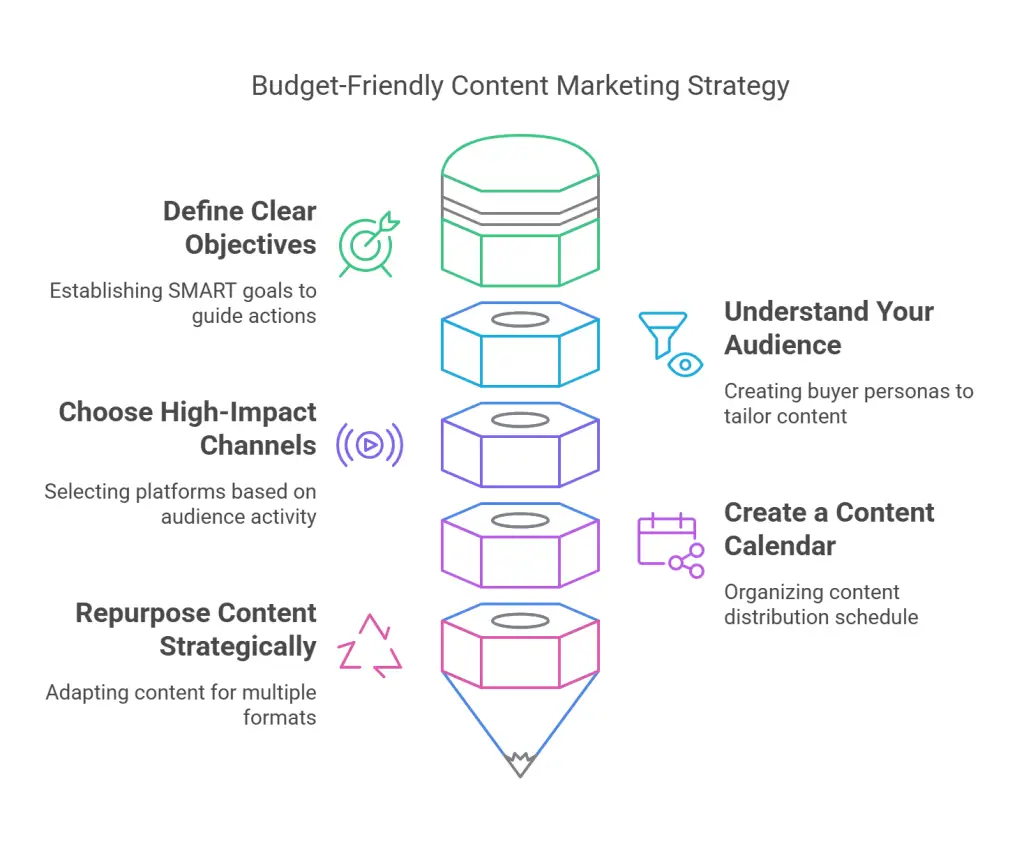
Budget-Friendly Content Marketing Tactics
1. Blogging: The Foundation of Organic Growth
Blogging remains one of the most cost-effective ways to drive traffic and establish authority. Focus on topics that address your audience’s pain points, using tools like Ubersuggest or AnswerThePublic to identify trending questions.
For example, a cybersecurity consultant might write “How to Protect Your Small Business from Ransomware,” optimizing the post for keywords like “affordable cybersecurity tips.” Internal linking—connecting new posts to older, relevant content—keeps readers engaged and improves SEO.
2. Social Media: Authenticity Over Perfection
Social platforms offer free avenues to connect with audiences. Prioritize authenticity over polished content. A handmade jewelry brand could post behind-the-scenes videos of artisans crafting pieces, paired with stories about sustainable sourcing practices.
Engagement tactics like polls, quizzes, and user-generated content (UGC) campaigns foster community. A coffee shop might launch a #MyMorningBrew hashtag, encouraging customers to share photos of their morning coffee ritual for a chance to be featured on the shop’s account.
3. Email Marketing: Direct Access to Your Audience
Email allows personalized communication at scale. Build your list with lead magnets like free eBooks, templates, or discount codes. For example, a project management tool could offer a “Productivity Toolkit” in exchange for email sign-ups.
Segmentation ensures relevance. A fitness studio might send different emails to new subscribers (a welcome series with studio tours) and long-term members (exclusive class discounts).
4. Collaborations: Amplify Your Reach
Partner with complementary businesses or micro-influencers to tap into new audiences. A plant nursery could collaborate with a local pottery studio to host a “Planters and Plants” workshop, cross-promoting the event on both businesses’ social channels.
Guest blogging is another powerful tactic. Writing a post like “How to Style Vintage Furniture” for an interior design blog positions your vintage store as an expert while driving traffic back to your site.
5. DIY Visual Content: Professional Quality on a Budget
Tools like Canva and Pexels make it easy to create eye-catching graphics and source royalty-free images. A real estate agent might design Instagram Stories showcasing home staging tips using Canva’s pre-made templates, ensuring brand consistency with custom fonts and colors.
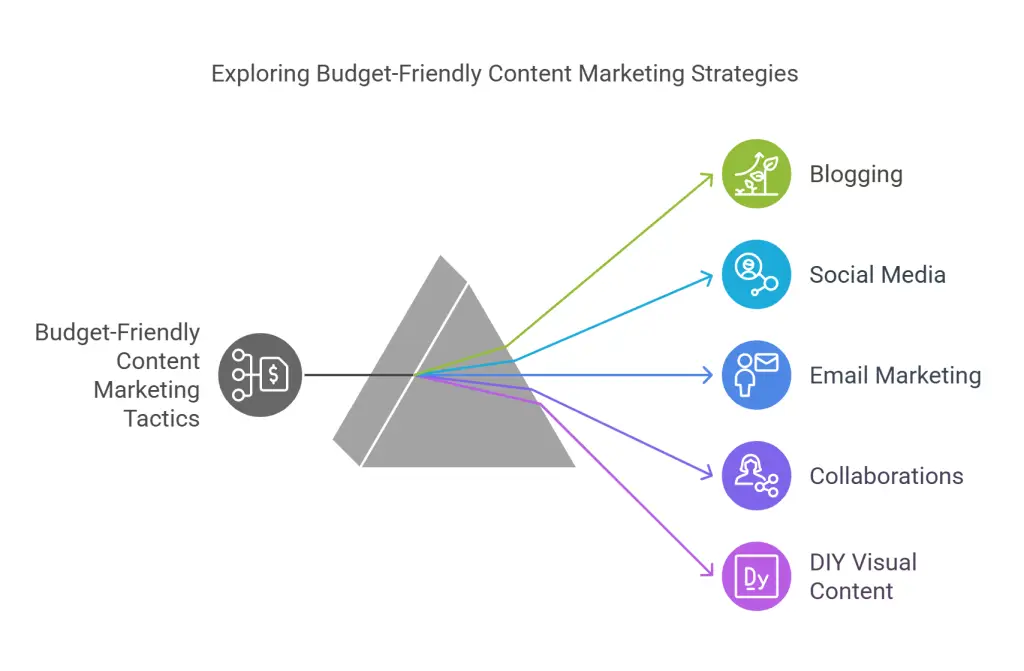
Advanced Strategies for Scaling Impact
1. Content Syndication: Expand Your Reach
Republish your best-performing content on platforms like Medium, LinkedIn Pulse, or industry forums. A marketing agency could syndicate a blog post titled “5 SEO Myths Debunked” on LinkedIn, adding a call-to-action (CTA) to download a free SEO audit guide.
To avoid SEO penalties, use canonical tags to signal the original source of syndicated content.
2. Interactive Content: Engage Deeper
Quizzes, calculators, and interactive infographics encourage active participation. A financial planner might create a “Retirement Savings Calculator” that lets users input their age, income, and goals to receive personalized estimates.
Tools like Outgrow or Typeform simplify the creation process. For example, a skincare brand could develop a “Skin Type Quiz” to recommend products based on users’ responses.
3. Community Building: Foster Loyalty
Online communities—like Facebook Groups or LinkedIn forums—create spaces for meaningful interaction. A freelance writer might launch a “Content Creators Collective” group, hosting weekly writing challenges and AMA (Ask Me Anything) sessions with industry experts.
4. Content Upgrades: Incentivize Conversions
Offer premium content in exchange for contact information. A nutritionist could include a “7-Day Meal Plan” download within a blog post about healthy eating, capturing emails while delivering immediate value.
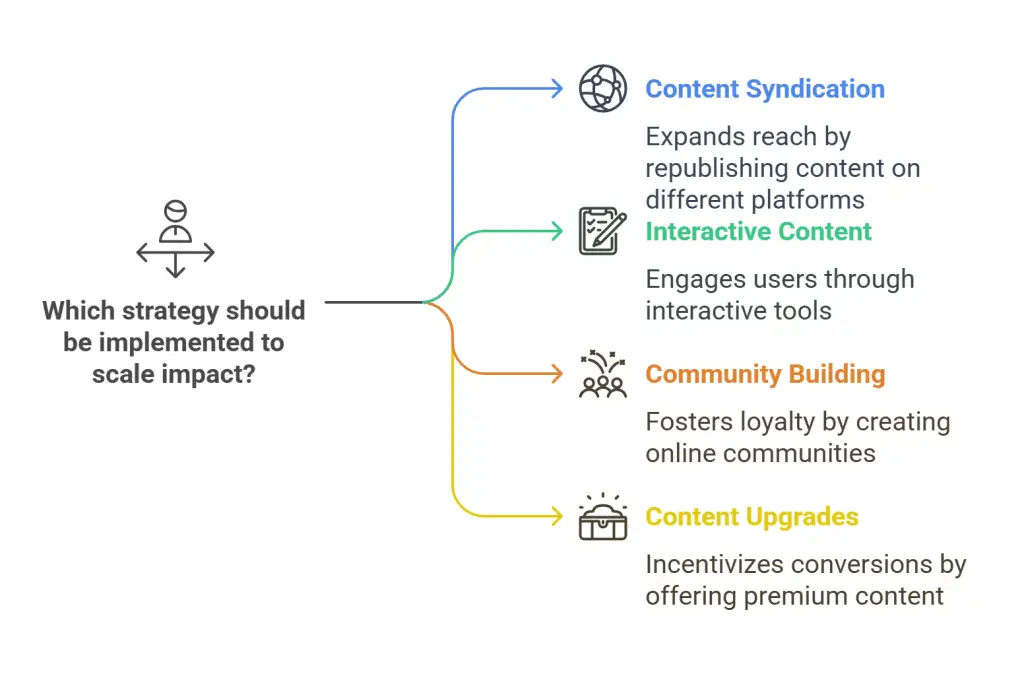
Measuring Success: Data-Driven Optimization
Tracking performance ensures your efforts yield results. Key metrics include:
- Website Traffic: Use Google Analytics to monitor organic vs. social referrals.
- Engagement Rate: Calculate likes, shares, and comments relative to your audience size.
- Conversion Rate: Measure how many readers become leads or customers.
- SEO Performance: Track keyword rankings with tools like Google Search Console.
For example, a digital marketing agency might discover that LinkedIn articles generate twice as many leads as Twitter posts, prompting a reallocation of resources.
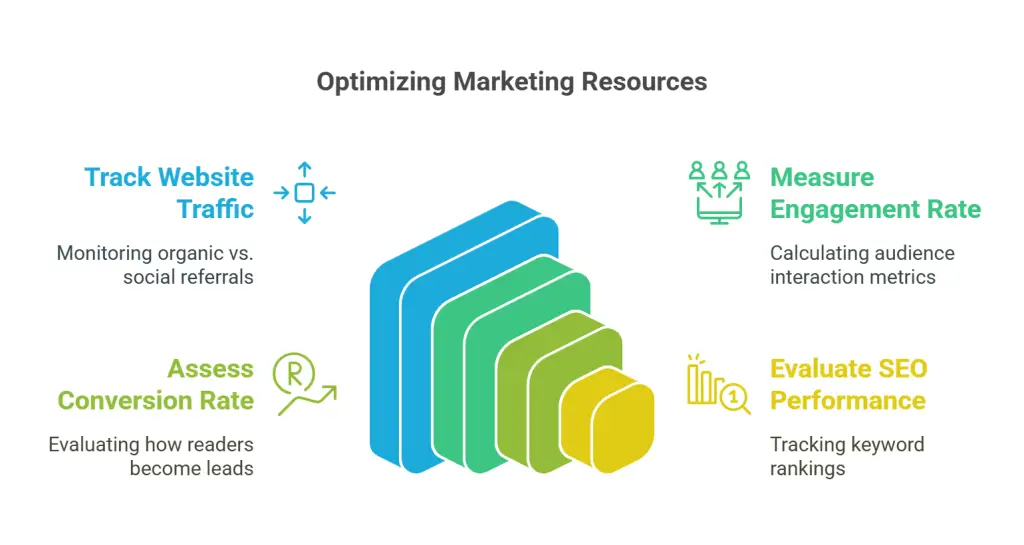
Case Study 1: Mark’s Home Repair Business
Challenge:
Mark, a licensed contractor specializing in residential repairs, faced intense competition from established home service companies in his mid-sized city. Despite offering competitive pricing and personalized service, he struggled to stand out in a saturated market dominated by businesses with larger advertising budgets.

Strategies:
- Local SEO-Driven Blogging
Mark recognized that homeowners often searched for urgent repair solutions online. He launched a blog on his website, publishing weekly posts targeting hyper-local keywords like “emergency plumbing services [City Name]” and “affordable roof repair [City Name].” Each post included step-by-step guides for minor fixes (e.g., unclogging drains, patching drywall) while subtly positioning his business as the go-to expert for complex repairs. By embedding location-specific keywords and optimizing meta descriptions, his blog began ranking on the first page of Google for local searches. - DIY YouTube Tutorials
To build trust and visibility, Mark created a YouTube channel featuring free DIY tutorials. His most popular video, “How to Unclog a Drain Without Chemicals,” combined practical advice with humor—showing him battling a stubborn clog while explaining why professional help is sometimes necessary. He ended each video with a call-to-action (CTA) encouraging viewers to contact him for major repairs. The videos were optimized for search with keywords like “home repair hacks” and shared across local Facebook community groups. - Community Partnerships
Mark partnered with two local hardware stores to host free weekend workshops titled “Home Maintenance 101.” Attendees learned basic repair skills, and Mark distributed branded pamphlets with discounts for his services. The stores promoted the events in their newsletters, driving foot traffic to both businesses.
Results:
- Within six months, Mark’s website traffic increased by 200%, with 40% of visitors coming from organic search.
- His YouTube channel gained 1,500 subscribers, and 30% of new clients cited the tutorials as their reason for choosing his services.
- The workshops generated 50 qualified leads, with three attendees booking full kitchen renovations.
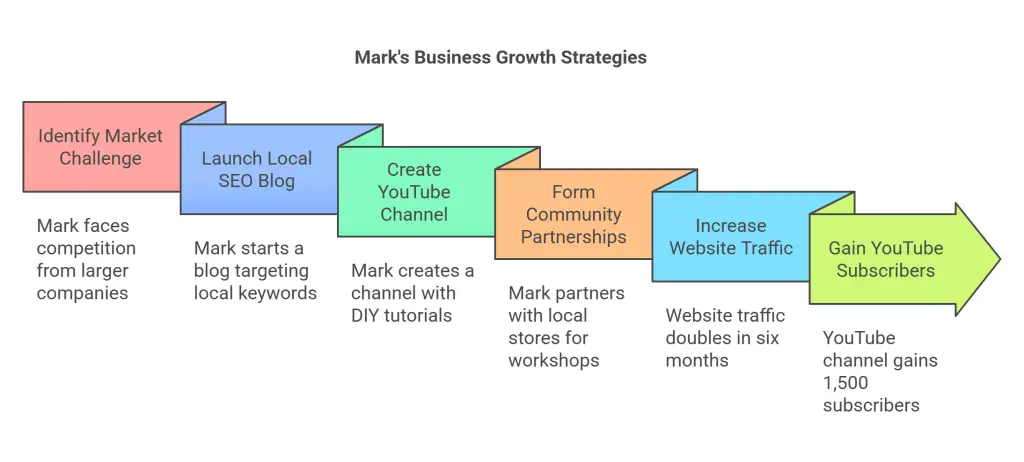
Case Study 2: Dr. Lisa Chen’s Cybersecurity Consulting Firm
Challenge:
Dr. Lisa Chen, a cybersecurity expert with a Ph.D. in data protection, struggled to attract small business clients despite her technical expertise. Many business owners underestimated cybersecurity risks or viewed her services as unaffordable. She needed to simplify complex concepts and position herself as a trusted advisor.

Strategies:
- Educational Whitepapers and Webinars
Dr. Chen authored a series of free whitepapers titled “Cybersecurity for Non-Tech Leaders,” breaking down topics like ransomware prevention and GDPR compliance into plain language. She promoted these resources through LinkedIn and local business associations. To humanize her brand, she hosted monthly webinars where she answered real-world questions, such as “How to Spot Phishing Emails” and “Budget-Friendly Firewall Solutions.” - Collaborations with Tech Influencers
She partnered with a popular IT podcast, offering to co-host an episode on “Protecting Small Businesses from Cyberattacks.” The podcast shared her whitepapers with its 20,000 listeners, and Dr. Chen gained credibility by aligning with a trusted voice in the tech space. - Case Studies on Client Success Stories
Dr. Chen published detailed case studies on her website, highlighting how she helped a local accounting firm recover from a data breach. The post included anonymized metrics, such as a 60% reduction in phishing attempts after implementing her training program. She repurposed the case study into a LinkedIn article and a YouTube interview with the client.
Results:
- Webinar attendance grew by 300% in four months, with 25% of attendees scheduling consultations.
- The podcast collaboration drove 500 downloads of her whitepapers, resulting in 15 new clients.
- Her case study was featured in Tech Security Weekly, leading to partnership inquiries from regional banks.
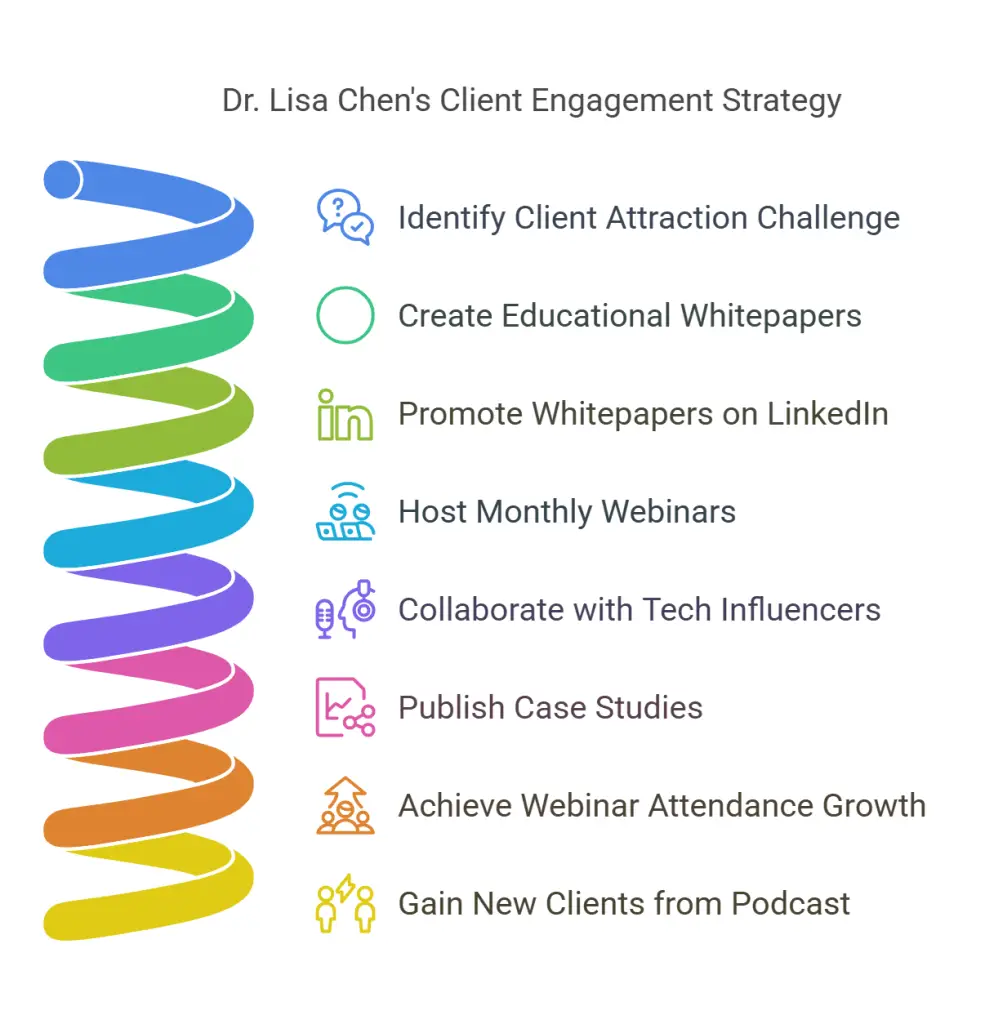
Case Study 3: Elena Rivera’s Holistic Health Coaching Practice
Challenge:
Elena Rivera, a certified holistic health coach, struggled to monetize her passion for wellness in a crowded online space. With countless influencers promoting fad diets and generic advice, she needed a unique angle to attract clients seeking sustainable lifestyle changes.

Strategies:
- YouTube Series: “Mindful Eating on a Budget”
Elena launched a YouTube series debunking diet myths and showcasing affordable, nutrient-dense meals. Episodes like “$20 Weekly Meal Prep for Busy Parents” combined cooking tutorials with mindfulness exercises, such as breathwork during meal prep. She optimized video titles and descriptions with keywords like “stress-free nutrition” and “holistic weight loss.” - Partnerships with Fitness Apps
She collaborated with a free meditation app, offering exclusive content for its users. In exchange, the app promoted her 7-day “Mind-Body Reset Challenge” to its 50,000 subscribers. Participants received daily emails with recipes, workout videos, and journaling prompts, culminating in a live Zoom workshop. - Email Nurturing with Personalized Content
Elena built her email list by offering a free “Holistic Wellness Assessment” quiz. Based on quiz results, subscribers received tailored content—for example, stress management guides for overworked professionals or immune-boosting recipes for retirees. She segmented her list and sent biweekly newsletters with success stories from clients who had reversed chronic health issues.
Results:
- Her YouTube channel gained 10,000 subscribers in six months, with 40% of viewers signing up for her email list.
- The app partnership generated 1,200 challenge participants, and 20% converted into paying clients for her 1:1 coaching program.
- Her open email rate (45%) far exceeded industry averages, with subscribers praising the personalized approach.
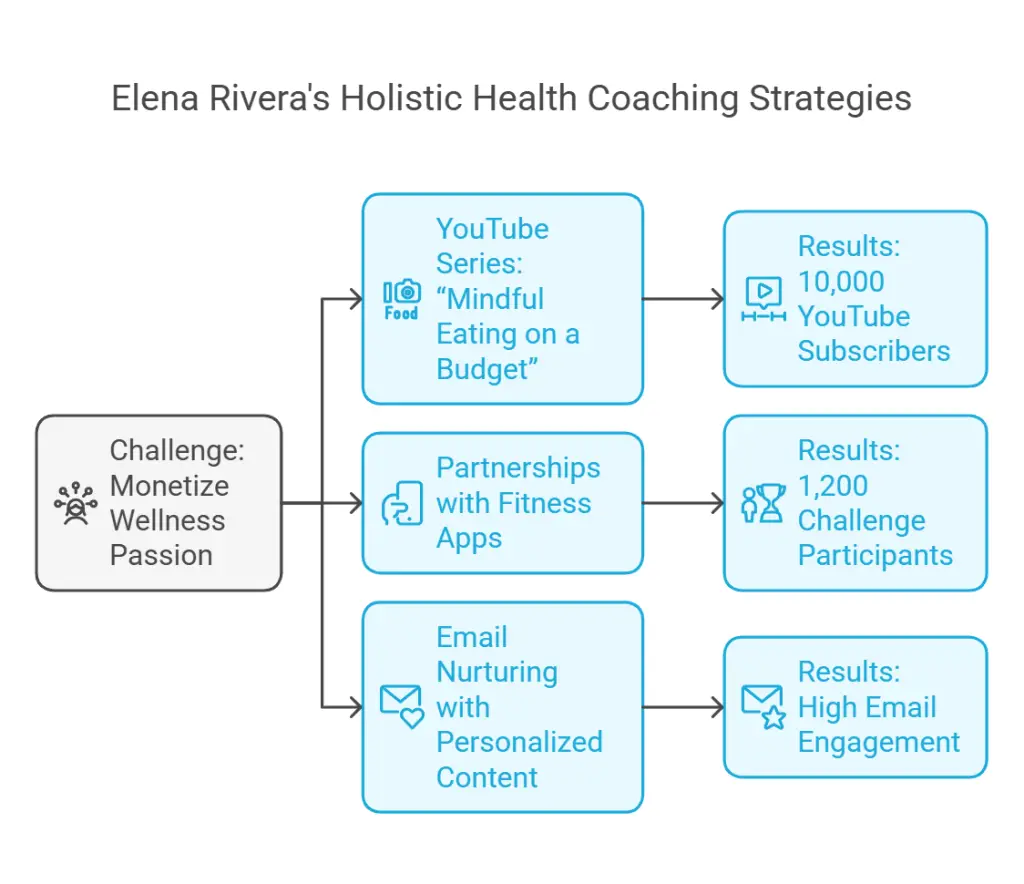
Conclusion
Content marketing on a shoestring budget isn’t just feasible—it can be transformative for entrepreneurs willing to invest time, creativity, and strategic thinking. While larger companies rely on hefty advertising budgets, small businesses and startups can level the playing field through authenticity, resourcefulness, and a deep understanding of their audience. The real power of content marketing lies in building relationships, not transactions. By prioritizing value over volume—creating content that educates, entertains, or solves problems—entrepreneurs can cultivate trust and loyalty that transcend budget limitations.
Success comes from starting small, staying consistent, and embracing iterative improvement. Instead of mastering every platform, focus on one or two channels where your audience is most active. A fledgling consultancy might begin with a monthly newsletter and biweekly LinkedIn articles, gradually expanding to YouTube tutorials as confidence grows. Consistency builds momentum; even modest, steady content signals reliability to both audiences and search engines.
Ultimately, content marketing is a marathon, not a sprint. It rewards patience, adaptability, and a willingness to experiment. Constraints become opportunities for innovation—whether through collaborations, repurposing, or community-driven campaigns. The result isn’t just short-term visibility but lasting brand equity, customer loyalty, and sustainable growth that no paid ad campaign can replicate.
Further reading
Revenue Marketing Alliance. “Budget-Friendly Marketing Strategies.” Last accessed February 4, 2025. https://www.revenuemarketingalliance.com/budget-friendly-marketing-strategies/.
Forbes. “Content Marketing on a Budget: 5 Strategies That Actually Work.” Last accessed February 4, 2025. https://www.forbes.com/sites/renaegregoire/2024/11/08/content-marketing-on-a-budget-5-strategies-that-actually-work/.
Writtent. “30 Low-Cost Ideas for Content Marketing on a Shoestring Budget.” Last accessed February 4, 2025. https://writtent.com/blog/30-low-cost-ideas-for-content-marketing-on-a-shoestring-budget/.
Content Whale. “Content Marketing on a Budget.” Last accessed February 4, 2025. https://content-whale.com/blog/content-marketing-on-a-budget/.
Bluetone Media. “Content Marketing Strategy for Small Business.” Last accessed February 4, 2025. https://www.bluetonemedia.com/Blog/content-marketing-strategy-for-small-business.
YouTube. “Content Marketing on a Budget.” Last accessed February 4, 2025. https://www.youtube.com/watch?v=Olx26i7j6U4.
Elite Editing. “Tips for Maximizing Your Content Marketing Budget.” Last accessed February 4, 2025. https://eliteediting.com/resources/content-marketing/tips-maximizing-content-marketing-budget/.







